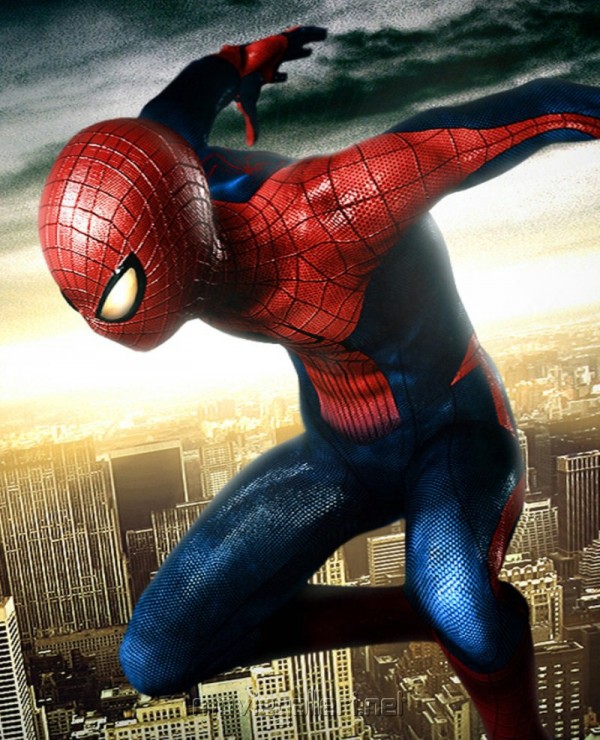THE AMAZING SPIDER-MAN (2012, directed by Marc Webb, 136 minutes, U.S.)
 BY DAN BUSKIRK FILM CRITIC I’m guessing it has been a decade or so since everybody started using the word “reboot” in place of “remake.” One of those marketing terms that slipped into everyday usage, it meant a new film wasn’t just a stale remake, it was newer, fresher, with old ideas reconsidered and completely re-imagined. Now, just a decade after the Sam Raimi-directed Spider-Man series began dominating the blockbuster season with its trilogy of high-budgeted extravaganzas, people are saying “Spider-Man, a reboot already?” Nope. The Amazing Spider-Man in not a radically re-thought reboot, it is strictly a serve-it-up-again remake.
BY DAN BUSKIRK FILM CRITIC I’m guessing it has been a decade or so since everybody started using the word “reboot” in place of “remake.” One of those marketing terms that slipped into everyday usage, it meant a new film wasn’t just a stale remake, it was newer, fresher, with old ideas reconsidered and completely re-imagined. Now, just a decade after the Sam Raimi-directed Spider-Man series began dominating the blockbuster season with its trilogy of high-budgeted extravaganzas, people are saying “Spider-Man, a reboot already?” Nope. The Amazing Spider-Man in not a radically re-thought reboot, it is strictly a serve-it-up-again remake.
It seems hardly different enough from the 2002 version of Spider-Man to choose sides, but I may even give the 2012 version a slight edge. Andrew Garfield and Emma Stone hit all the right notes as Peter Parker and the sure-to-be-doomed Gwen Stacy, Spidey’s ex-girlfriend who shook the world by actually dying in The Amazing Spider-Man #122 in 1974 (I was there!). Marc Webb is directing his second feature after the ultimate Zooey Deschanel “meeting cute” epic 500 Days of Summer, so with actors this game (especially the British stage-raised Garfield) the film quickly achieves teenage crush euphoria with all its attendant fumbling romance.
Martin Sheen and Sally Field play Peter’s Uncle Been and Aunt May, with Peter’s origin being re-written so that his parents were involved in some shadowy science/spy stuff before their plane crashed, and thus laying groundwork for a couple of sequels at the very least. Gwen works at the mysterious OsCorp and — as the intern with the greatest security clearance ever — she’s a collaborator when Peter arrives at their lab in time to get bitten by a radioactive spider bathed in gorgeous cerulean blue, easily the film’s most beautiful moment. At OsCorp Peter also meets his father’s ex-partner Dr. Curt Connors, a scientist so driven to replace his severed arm that he eventually turns into The Lizard, a near human-sized little Godzilla. Spidey and The Lizard fight amongst the skyscrapers and business offices until one is finally destroyed. But before the closing credits finishing rolling, a shadowy figures mumbles something cryptic about the next sequel…
All the elements dazzle and engage but did The Amazing Spider-Man have to play it this safe? I say this is a remake more than reboot, but it’s a little worse than that, remakes usually create a new production design for their stories. Yet as a production, The Amazing Spider-Man looks feels more like Part 4 of a franchise. It is as if the James Bond series decided in 1965 to remake Dr. No instead of Thunderball So it’s Spider-Man’s origin all over again, including Peter’s cockiness triggering Uncle Ben’s death and all the other set ups we went through a million times in theaters, DVDs and cable broadcasts. We all know who these characters are instantly, making it hard not to get fidgety as the film labors over its introductions.
But even beyond the origin, The Lizard isn’t much different than The Green Goblin, an interchangeable madman for Spidey to fight across the New York skyline, while facades crash to the street, SWAT teams make their moves and every other imaginable post 9-11 apocalyptic cityscape spectacle has been delivered. Compare this to the Batman Begins roboot of 2005, taking a franchise widely viewed as out-of-gas and re-imagining a differently-scaled world that could contain a Batman. Blockbusters should be big, noisy and maybe even a little predictable, but they should at least have the whiff of “new” about them. And what are comic books anyway without imagination?
PREVIOUSLY: ARACHNOPHILIA

